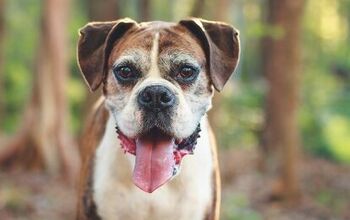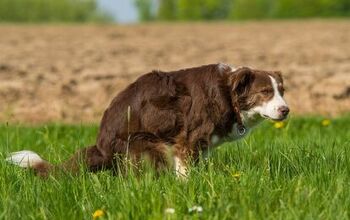All About Elbow Dysplasia in Dogs

You probably don’t think of your dog having elbows – after all, he has legs rather than arms. The truth is, however, that your dog does have elbows and they are prone to a number of problems including elbow dysplasia. Elbow dysplasia in dogs is not a disease but a group of anatomical abnormalities, any of which can affect your pooch’s gait and increase his risk for arthritis.
Related: What Is Hip Dysplasia In Dogs?
What is Elbow Dysplasia in Dogs?
Elbow dysplasia in dogs is not actually a singular disease or condition. Rather, it is a term used to describe any of several abnormalities in a dog’s elbow joint. There are four specific problems that can be included under the umbrella term “elbow dysplasia:”
- Osteochondrosis dissecans
- Fragmented coronoid process
- Ununited anconeal process
- Elbow incongruency
In order to understand each of these problems, you must first know that there are three bones that make up a dog’s elbow joint: the radius, the ulna, and the humerus. These three bones grow together and, in a healthy dog, they fit together perfectly to form the elbow joint. In cases of elbow dysplasia, however, something goes wrong.
Related: All About Joint Supplements For Dogs
Osteochondrosis dissecans occurs when a piece of cartilage in the joint either comes loose or pulls away from the surface of the joint – it causes inflammation and can be painful for your dog.
A fragmented coronoid process develops when a small piece of the ulna bone breaks off inside the joint, causing irritation to the lining of the joint and wearing away at the cartilage.
An ununited anconeal process is characterized by a bony protuberance inside the elbow that detaches and causes irritation and degeneration of the joint.
Finally, elbow incongruency is a term that describes an imperfect conformation of the joint which causes cartilage to wear away over time.
Symptoms and Treatment Options for Elbow Dysplasia in Dogs
The symptoms of elbow dysplasia may vary depending which type your dog has and how far it has progressed. In the beginning, dogs typically exhibit an altered gait in which they paddle their front feet as they walk – some dogs also hold their elbows close to the body as they walk.
Other symptoms may include sudden or intermittent lameness, pain, fluid accumulation in the joint, and decreased range of motion. Some dogs will also hold the affected limb away from the body.
Treatment options for elbow dysplasia include surgery followed by cold-packing the joint to reduce swelling and pain. Physical therapy may also help to restore normal range of motion, especially since some dogs will be unable to bear weight on the affected limb after surgery. Weight control and healthy diet are important supportive measures to take and medications may help control pain and swelling.
Any dog can develop elbow problems, but elbow dysplasia seems to affect larger breeds more often than smaller breeds. Some of the breeds most prone to this condition are retrievers, setters, spaniels, Rottweilers, Shar-Peis, German Shepherds, and Newfoundlands. The condition usually develops between 4 and 10 months, so at the first sign of trouble you should take your dog to the vet.

Kate Barrington is the loving owner of two cats (Bagel and Munchkin) and a noisy herd of guinea pigs. Having grown up with golden retrievers, Kate has a great deal of experience with dogs but labels herself a lover of all pets. Having received a Bachelor's degree in English, Kate has combined her love for pets and her passion for writing to create her own freelance writing business, specializing in the pet niche.
More by Kate Barrington























